Family : Chaetodontidae

Text © Giuseppe Mazza

English translation by Mario Beltramini
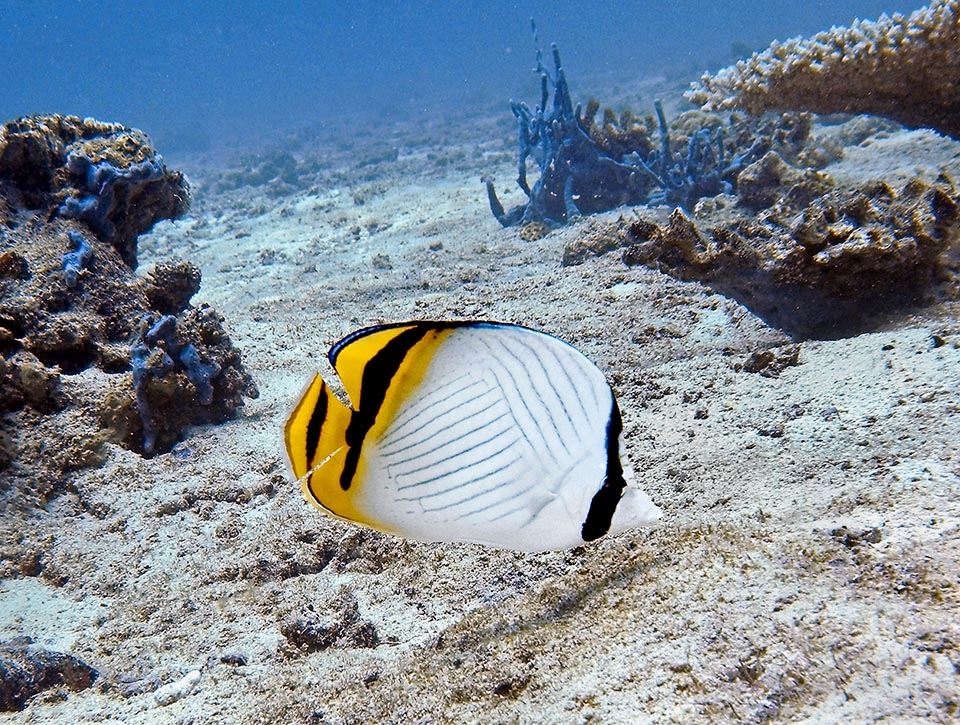
Despite the name, the Vagabond butterflyfish (Chaetodon vagabundus) is not a homeless fish, but, conversely, the couples defend their territory from the conspecifics © Karine Marangon
The very common Vagabond butterflyfish (Chaetodon vagabundus Linnaeus, 1758) belongs to the class of the Actinopterygii, the ray-finned fishes, to the order of Perciformes and to the family of Chaetodontidae.
The name of the genus Chaetodon comes from the Greek “χαίτη” (khaite), hair, and “ὀδούς” (odous), tooth, due to the bristle-shaped teeth.
The name of the species vagabundus, vagabond in Latin, refers to the vast area of distribution of this fish, of more, after very recent estimations, than seventy million of square kilometres, and to the fact that it can be found in the most varied environments.
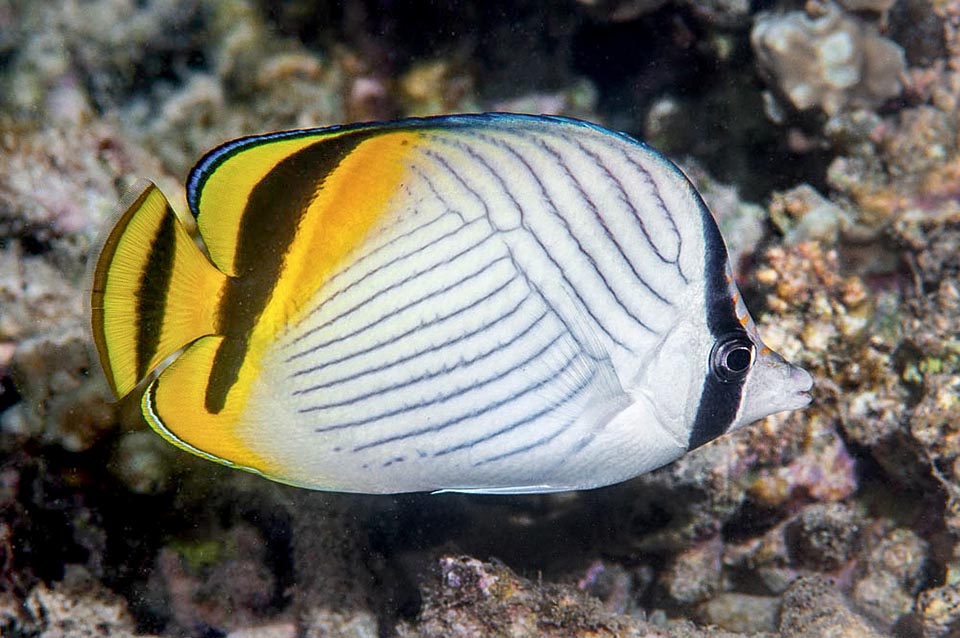
However, over the centuries, it is a species that has travelled a lot, so much that now in the tropical Indo-Pacific occupies an area of more than 70 million square kilometres © François Libert
Zoogeography
It is frequent in the tropical waters of the Indo-Pacific. We find it from South Africa and Madagascar up to the Red Sea and the Arabic Sea, the Seychelles, Maldives, India, Sri Lanka, Thailand, Malaysia, Australia, Indonesia, New Guinea, Micronesia, New Caledonia, Philippines, Taiwan and China up to southern Japan. Eastwards, it reaches the Fiji Islands, Tonga, Samoa, Kiribati, Tahiti and Tuamotu; southwards, Lord Howe and Easter islands.
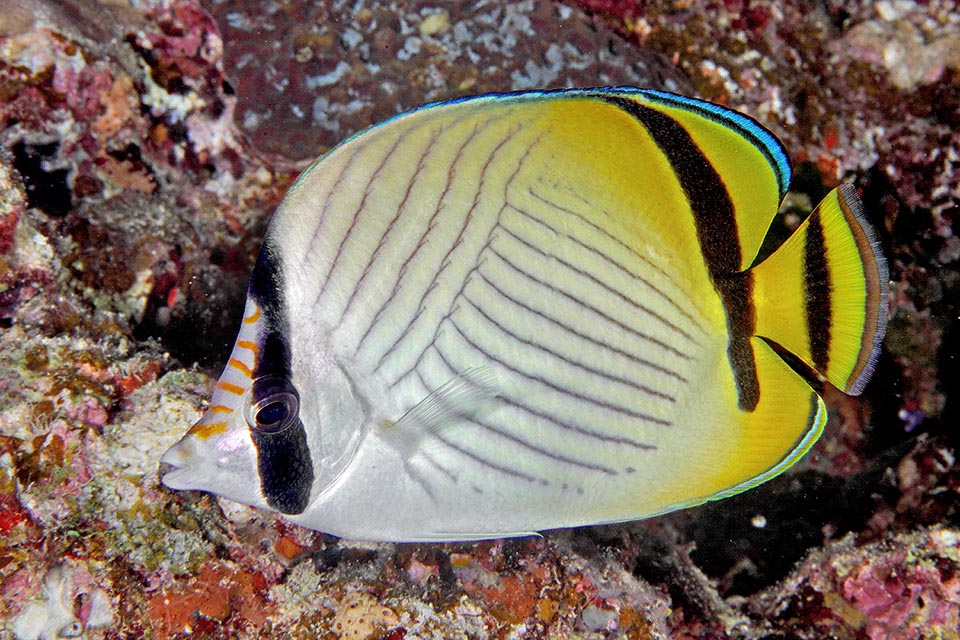
It can be met, not under 30 m of depth, among rocks and madreporic formations, but also in the murky and brackish waters at the mouth of the rivers © Klaus Stiefel
Ecology-Habitat
It lives in varied environments. It is at home in the madreporic formations up to 30 m of depth, but also offshore, among the rocks covered by seaweeds and even in the murky waters where fresh water flows.
Morpho-physiology
It can reach the 23 cm, even if, usually, measures 15-16 cm. The body is flat, more or less oval, with elongated snout.
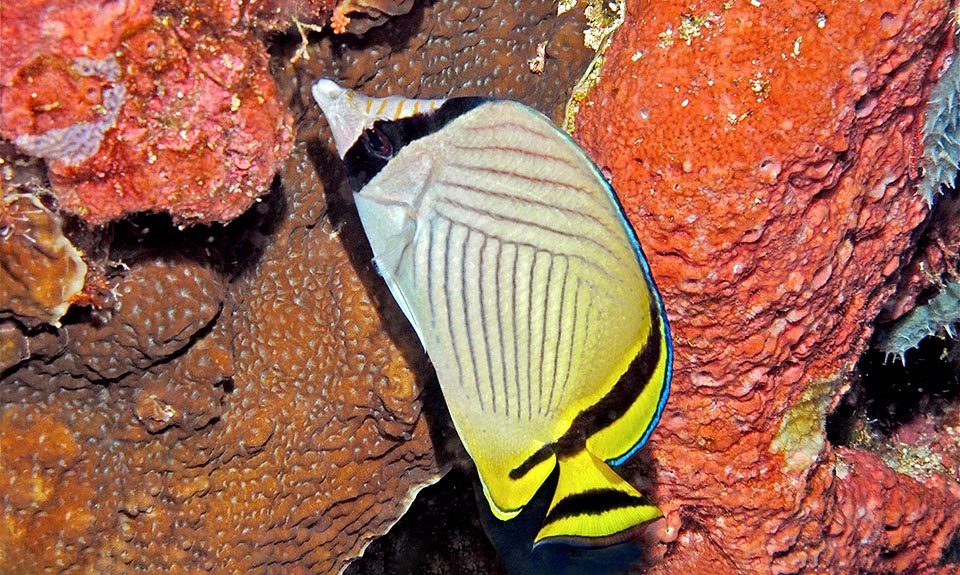
Giant among Chaetodons, it may reach the length of 23 cm, eating polyps of madrepores, polychaetes, sea anemones and algae © Bernard Dupont
The dorsal fin has 13 spiny rays and 22-25 soft; the anal has 2-3 spiny rays and 19-22 soft; the ventral ones 1 spiny ray and 5 soft. The pectoral fins are unarmed, with 14-17 rays, and the caudal is more or less blunt.
On the background colour, yellowish white, we note two series of parallel lines, perpendicular to each other like the Chaetodon auriga, one mimetic black vertical band on the eye, another at the level of the caudal peduncle, and a third one, symmetrical to the eye, on the caudal fin of the adults. The final part of the body is coloured in yellow.
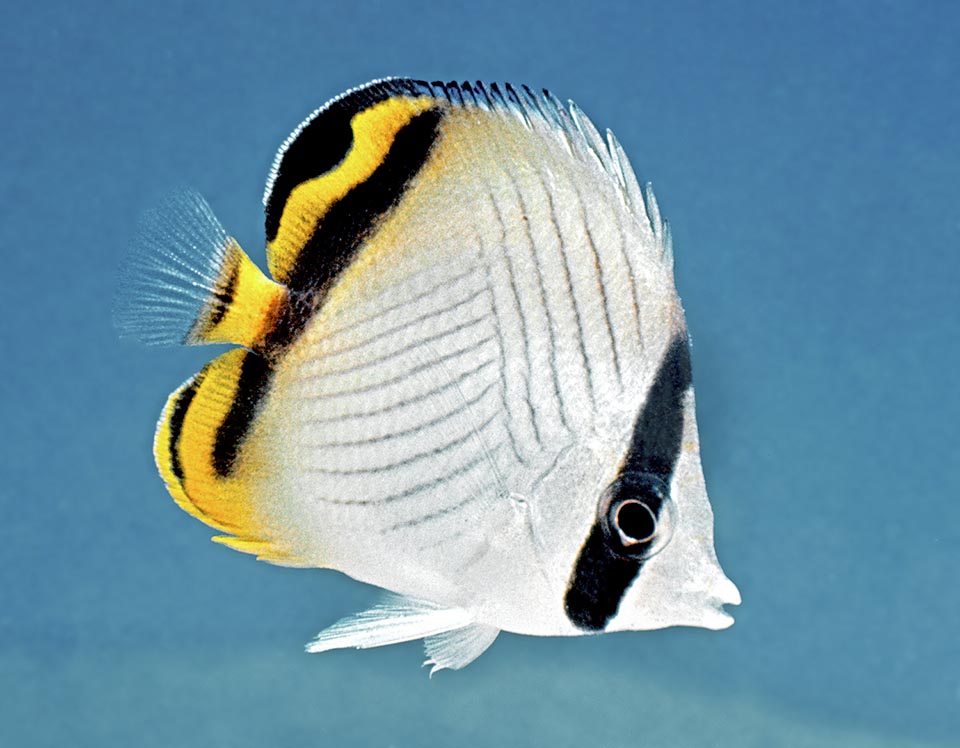
Juvenile. We still note, at the end of dorsal fin, part of the black round spot of early days, a fake eye that later on disappears blending into the dark line © Giuseppe Mazza
Upward, at the end of the dorsal fin, the juveniles show a roundish black spot, similar to a fake eye, which eventually disappears reducing to a dark trait.
Ethology-Reproductive Biology
It lives usually in stable pairs, with a small territory they defend against their conspecifics, whilst they keep mostly indifferent to the intrusion of other fishes. They eat polyps of madrepores, polychetes, sea anemones and algae. After the fecundation, the eggs are entrusted to the currents.
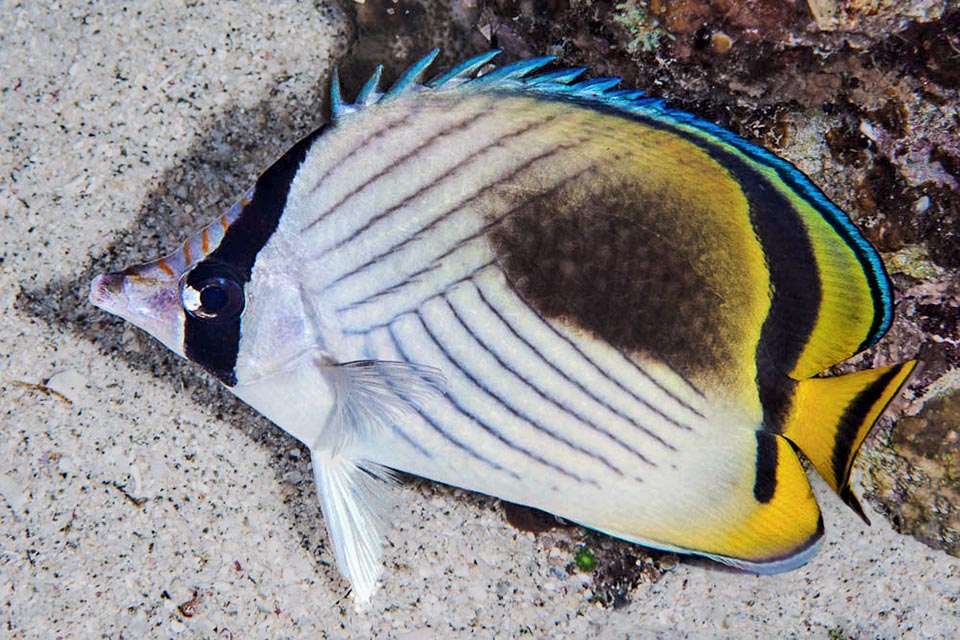
Like many butterflyfishes, also Chaetodon vagabundus has a night mimetic livery and is not an endangered species © François Libert
In some zones, the populations have met strong reductions due to the death of the reef because of the global warming, but elsewhere they are untouched and in condition to double in less than 15 months. The varied diet is another element which is favourable to the species, and even if the young specimens feed the aquaria trade, the fishing vulnerability index is low, with an index of 13 on a scale of 100.
Synonyms
Anisochaetodon vagabundus Linnaeus, 1758; Tetragonoptrus vagabundus Linnaeus, 1758; Chaetodon nesogallicus Cuvier, 1829; Tetragonoptrus nesogallicus Cuvier, 1829; Chaetodon setifer hawaiiensis Borodin, 1930.
→ For general information about FISH please click here.
→ For general information about BONY FISH please click here
→ For general information about CARTILAGINOUS FISH please click here.
→ To appreciate the BIODIVERSITY of BONY FISH please click here.
→ To appreciate the BIODIVERSITY of CARTILAGINOUS FISH please click here.
